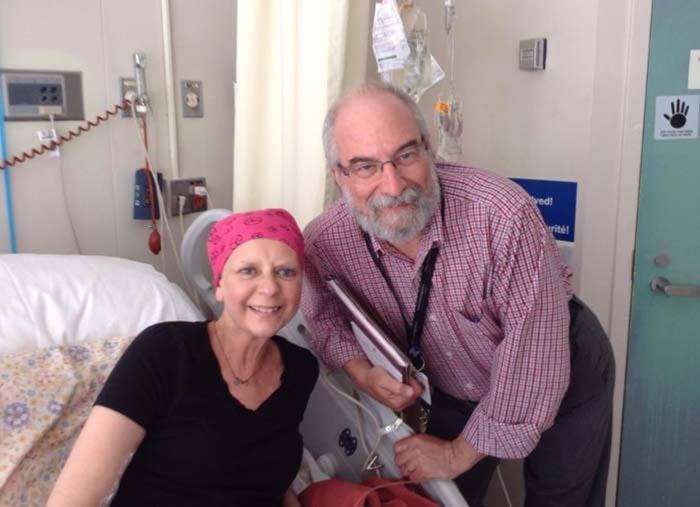A local woman yearning to come home is hoping to find a family doctor in the face of what she calls a miraculous recovery from a crippling disease.
Ingrid Steppan has been fighting Stiff Person Syndrome since 2008, but recently underwent a groundbreaking treatment in Ottawa that she calls a cure.
In order to return to Cranbrook, she needs to find a family doctor in the area or close enough to home who can monitor her recovery.
Stiff Person Syndrome, a rare neurological disease, is characterized by progressive rigidity and stiffness, with symptoms including postural deformities, chronic pain and impaired mobility.
After being told that she would likely die from the disease, she packed up and moved to Saskatchewan before getting involved with a doctor in Ottawa who was able to treat her condition.
What’s miraculous about her recovery is the treatment she received from Dr. Harry Atkins, the Attending Physician, Blood and Marrow Transplant Program at the Ottawa Hospital eight and a half months ago.
Atkins’ program featured treatment with stem cells that Steppan grew in her body over a 10-day period. Afterwards, the stem cells were harvested and she went through three weeks of chemotherapy that wiped out her immune system for the duration of the treatment.
For the entire procedure, there was no operation that required going under the knife, as previously and erroneously reported in the Daily Townsman.
“A person can have a stem-cell transplant. It was not bad at all. I did not have a hard time,” said Steppan. “…I stayed in the hospital for 23 days because you lose your immune system—it wipes it right out—but other than that, it was great, and there was a total support system all the way around, whether it was psychological, social work, endocrinology.”
After needing medical equipment such as a wheelchair and a walker for mobility, she’s been able to put them away.
“I am recovering, it takes a while, my only affect right now is just my right leg, that’s the only thing that I can still feel stiff in. My other leg and my two arms are fine, so it can take up to two years for it to completely disappear and recover, so it’s been eight-and-a-half months now,” Steppan said.
She is the third patient to have the stem-cell treatment for Stiff Person Syndrome in Canada. In order for it to be called a cure, the procedure must be done on 20 people.
“It’s not hard. It sounds complicated the way they have it set up, but it’s actually very simple,” Steppan said. “You give up a month of your life at the hospital, then you’re done. People are flocking to Russia to have this done all the time—Americans—because there’s not as much of it being done in the States as there could be.
“In other countries, they are calling it a cure because they’ve done more than 20, but because Canada hasn’t, they can’t yet, they can just call it a treatment or an experiment, but it’s an experiment that works.”
It’s also a treatment that’s relatively obscure, and Steppan is urging government at the provincial and federal level to establish a central source for the public to identify which doctors, hospitals and universities are working and researching different kinds of cancers and diseases.
“This treatment has been available for 33 years here in Canada and what I really don’t understand is I lived in Cranbrook for 22 years and my doctor knew I had this disease but there’s no information on who’s doing what research anywhere across Canada and what trials are being done, what treatments are being done,” Steppan said.
She still has her home in Cranbrook and her children and grandchildren still live in the area. However, it’s a daunting challenge to find a family physician, as there is a waiting list of a few thousand people, according to Steppan.
If not Cranbrook, she’s hoping to find a family doctor in Vancouver—someplace she could fly to relatively quickly to see a physician.
“I do want to come home, I really, really do. I have three kids there, I have a grandson there, I’ve met my grandson twice,” said Steppan. “It breaks my heart, but at the same time, I don’t want to jump the queue, because from what I understand from Interior Health, there’s over 6,000 waiting for a family doctor. “
